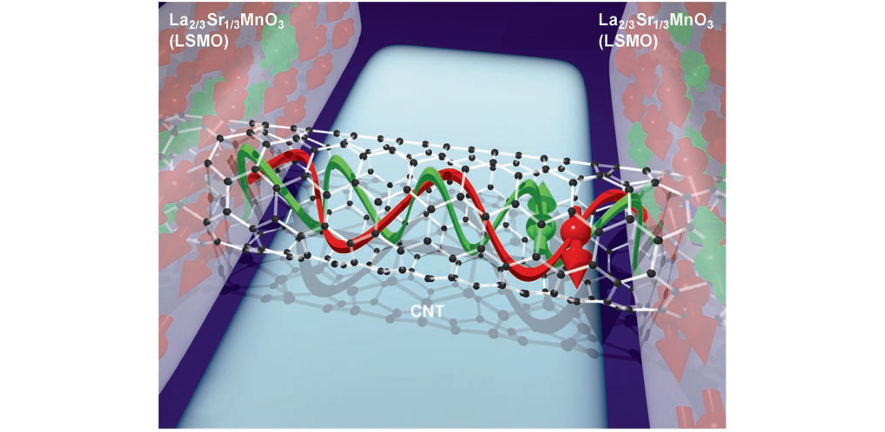
Banner image: The image above shows carbon nanotube (CNT) between manganite electrodes of LSMO [A. Fert, Angew. Chem. Int. Ed. 47 (2008) 5956].
Devices can be used to peform some useful function (such as data storage), but they can also be used to test the physics of materials and combinations of materials. The resulting contribution to basic scientific knowledge is an intrinsically important goal that also leads to better functionality, and thus improved performance in applications.
Spintronics
One exciting new area which we are exploring in device physics is spintronics. The ability to send spin-polarized electrons through a non-magnetic channel running between ferromagnetic electrodes could be exploited in future logic and memory devices with low power consumption. Having previously shown that a carbon nanotube can carrry spin-polarized electrons without significant depolarization, attention is currently focussed on its well known allotrope graphene.
Photonic devices
The department also studies a range of photonic devices, including single photon sources. These devices, which emit a single fundamental particle of light in a controlled fashion, can be made from a wide variety of materials. We are particularly interested in devices made from nitride semiconductors, since these materials allow single photon emission at temperatures which can be accessed without large and expensive cooling systems. The devices themselves can also be compact and driven with a small voltage. They are thus prime candidates for application in practical future quantum technologies such as quantum computers of quantum cryptography systems.
